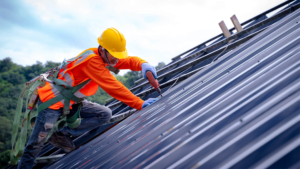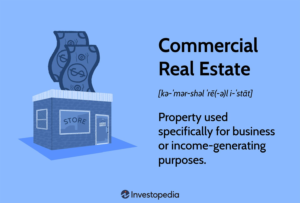When it comes to improving your home, few investments are as timeless and valuable as skilled carpentry. Whether you’re looking to enhance aesthetics, increase functionality, or create custom features tailored to your lifestyle, expert carpentry services offer versatile solutions that can completely transform your space. From structural upgrades to fine decorative details, Carpenter Boston professionals bring craftsmanship and precision to every project. They are helping homeowners achieve both beauty and practicality.

The Importance of Carpentry in Home Improvement
Carpentry is the foundation of countless elements within a home. It supports structural integrity, defines space, and adds character. Whether it’s framing a new room, building custom shelves, or installing crown molding, quality carpentry makes a lasting impact on how a home looks and feels.
Skilled carpenters combine an understanding of materials, tools, and techniques to create work that is not only visually pleasing but also durable and efficient. With their expertise, homeowners can bring ideas to life with precision and attention to detail that stand the test of time.
Key Areas Where Carpentry Enhances Your Home
Carpentry services can be applied throughout the home to improve both form and function. Some of the most common and impactful carpentry projects include:
1. Custom Cabinets and Shelving
Custom-built cabinets and shelving units are not only aesthetically pleasing but also maximize space in kitchens, bathrooms, home offices, and living rooms. Unlike mass-produced furniture, built-in carpentry solutions are designed specifically for your home’s layout and your personal needs. The result is a seamless, organized look that enhances both storage and style.
2. Trim and Molding Installation
Decorative features like baseboards, crown molding, chair rails, and wainscoting add depth and elegance to any room. These finishing touches give walls and ceilings a polished appearance and can dramatically elevate the look of a home without requiring a full remodel.
3. Staircases and Railings
Stairs are not just functional—they can be a striking focal point in a home. Skilled carpenters design and construct stairs that are both safe and visually stunning. From traditional wood banisters to contemporary open riser designs, a custom staircase enhances the architectural appeal of a home.
4. Door and Window Framing
Properly installed doors and windows rely on expert carpentry for a snug fit and long-lasting performance. Framing adjustments may be needed to accommodate new fixtures or to upgrade existing ones for better energy efficiency. Trim work around doors and windows also enhances visual appeal.
5. Outdoor Structures
Carpentry extends beyond the interior. Decks, pergolas, fences, and gazebos all require expert craftsmanship to ensure they are both structurally sound and visually appealing. Outdoor carpentry not only improves curb appeal but also adds usable living space.
Benefits of Hiring Skilled Carpenters
While DIY projects can be tempting, professional carpentry brings a level of craftsmanship that ensures superior results. Here are several reasons to invest in skilled carpentry services:
1. Precision and Quality
Experienced carpenters understand the properties of different woods, know which tools to use for each task, and are trained in techniques that produce flawless results. Their attention to detail leads to high-quality finishes that look great and perform well for years.
2. Customization
Every home is unique, and pre-made solutions don’t always fit perfectly. Skilled carpenters create custom features that align with the homeowner’s vision and the home’s specific dimensions. This level of personalization results in a cohesive and functional design.
3. Efficiency and Safety
Professional carpenters work efficiently and know how to avoid common pitfalls that can delay projects or compromise safety. Their expertise helps minimize mistakes and ensures that each piece fits and functions as intended.
4. Increased Property Value
Well-executed carpentry projects often boost a home’s market value. Buyers appreciate custom-built features, quality craftsmanship, and thoughtful design. Whether it’s a new staircase, an upgraded kitchen, or detailed trim work, carpentry improvements contribute to a home’s appeal.
Planning a Carpentry Project
Before beginning a carpentry project, homeowners should consider their goals, budget, and design preferences. Whether it’s a major structural addition or a simple decorative upgrade, planning ensures the final result meets expectations.
Start by identifying what areas of your home need improvement. Do you want more storage? Better organization? A refreshed aesthetic? Once your goals are clear, consult with a professional to explore design options and material choices.
Budgeting is also an essential step. While custom carpentry is an investment, it offers long-term value through durability, aesthetics, and improved functionality. Setting a realistic budget helps guide project decisions and prevents cost overruns.
Sustainable Carpentry Choices
Today’s homeowners are increasingly interested in sustainability, and carpentry can play a role in creating an eco-friendly home. Many carpenters offer options like reclaimed wood, sustainable lumber, and low-VOC finishes. These choices reduce environmental impact without compromising style or performance.
Additionally, well-designed carpentry projects often reduce waste and maximize space efficiency. Built-in storage, for example, eliminates the need for bulky furniture and allows for better use of square footage.
Skilled carpentry services offer a unique combination of beauty and function, helping homeowners enhance their living spaces with tailored solutions. From structural projects to intricate finish work, professional carpenters deliver quality craftsmanship that adds character, comfort, and value to any home. Whether you’re envisioning a new custom bookshelf or a complete room transformation, expert carpentry ensures the results are not only visually striking but also built to last. Investing in skilled carpentry is a smart way to improve both your home and your quality of life.








